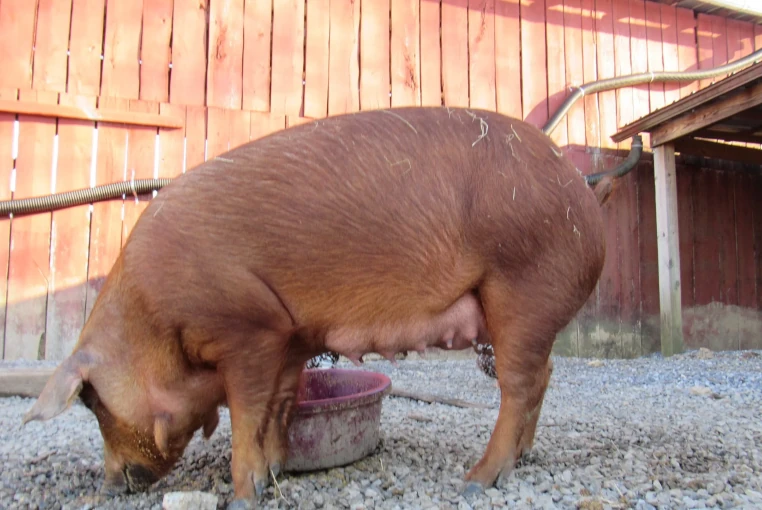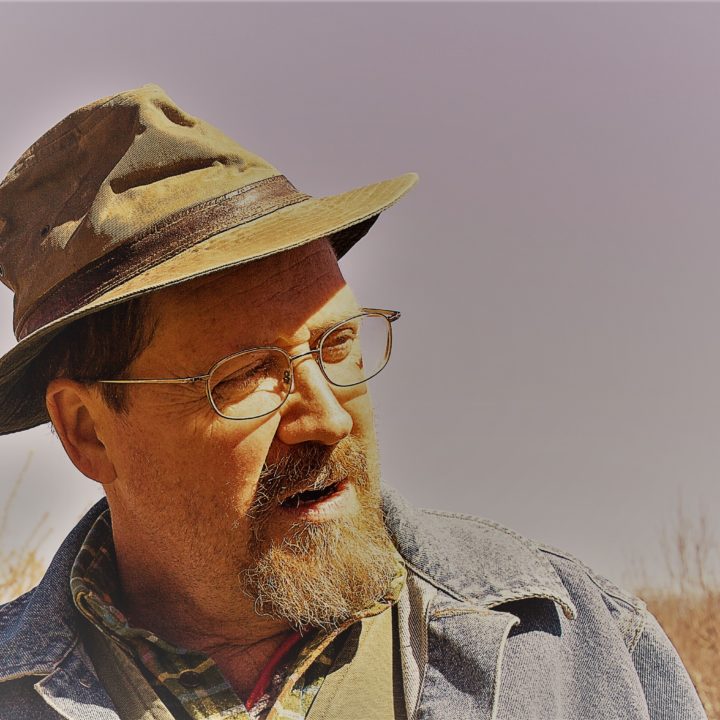Each ewe marked with a blue crayon streak down her back holds a membership among the select. One day last week we moved the marked group of seven ewes into a separate pen before turning the rest of the flock out onto the summer grass. Later that afternoon we took the chosen seven to a graded sheep auction in Athens, Tennessee. At auction, they might be sold to another sheep farmer or someone looking to start their own flock. Then again, they might be bought as part of a larger lot and head to a processor. You never know who will be buying on any given day.
Ewes are culled for practical reasons. Some are at the end of their productive life, others have given birth to lambs that grew out unsatisfactorily, and some have proven to be unthrifty or especially susceptible to parasites. Every ewe culled has been known to us and valued, and the vast majority have been born on this land.
Farming livestock involves a daily exertion of power over life and death. A flock of chickens only needs so many roosters, with the excess going into the pot. The cock that rules the roost remains for a couple of years, at which time he makes way for a younger, more virile replacement and becomes the flavoring for a savory gumbo. A sow that doesn’t produce satisfactorily becomes whole hog sausage. Her weanlings grow and grow and are then loaded in a trailer and sent to the butcher. Extra bull calves are banded and fattened as steers—again, whatever the livestock, one male only is needed for breeding.
Our Red Wattle sow, named Ginger for her coloring, had been chosen for culling. Her date with Morgan’s Meat Processing was booked and noted on the calendar. I bought Ginger in remote Hancock County, a rural county nestled right against the Kentucky border, at a homestead set back in a deep no-light “holler” in the spring of last year. She is a very personable, very docile sow, a lovely specimen of her heritage breed.
Ginger had her first litter in January—a disappointing four piglets, of which only two survived. We would have been content with six but prefer 8-12. We decided to give her another chance and breed her once again to a Berkshire boar. When the farrowing date at the first of August passed with no piglets, it was with real sadness that we scheduled her slaughter. That she would make that final trip with her two market-weight offspring was of no comfort.
On a small farm we have some latitude for keeping animals. Because ours is a modest economic model of a peculiarly non-industrial bent, choices are often made as much for personal reasons as for financial. Still, keeping a two-time loser on the payroll truly doesn’t make sense. We are not that kind of place, neither a petting zoo nor an animal rescue. Ours is a working, producing farm, and here everything is expected to earn its keep.
Yet … last week we were at our friends’ farm picking up three weanling piglets to grow out for ourselves and customers. They were from the same litter that we had helped castrate just a couple of weeks earlier, and we were buying them now because Ginger’s failure to farrow had left us with a gap in our pork production schedule (not to mention that a 500-pound non-producing hog eats the same massive amount of feed that a 500-pound producing hog requires).
While it is still not certain if the failure to farrow was the fault of our sow, when our friend mentioned while loading the barrows that she would be happy to help us artificially inseminate Ginger, I did an uncharacteristic clutch at the offer. I wanted Ginger to work out, did not want to take her to market, at least before she had lived out her productive life.
For those who don’t farm, my attitude may strike you as callous and unfeeling. Practical decisions often do. Which is why so many tough decisions in life are “farmed out” to others. But, not here on our farm, while livestock is in our care, we treat them well; we give them plenty of room, feed, and attention. Yet there is an end, as indeed there is for each of us.
When I fed Ginger last evening—watching her tuck into her trough, then galumph around the pasture—I felt at peace with this very uneconomic decision to give her another chance and allow her to keep her place.
…………………………………………………………..
My book, Kayaking with Lambs, is now available from Amazon and Barnes & Noble (as well as Front Porch Republic Books).






